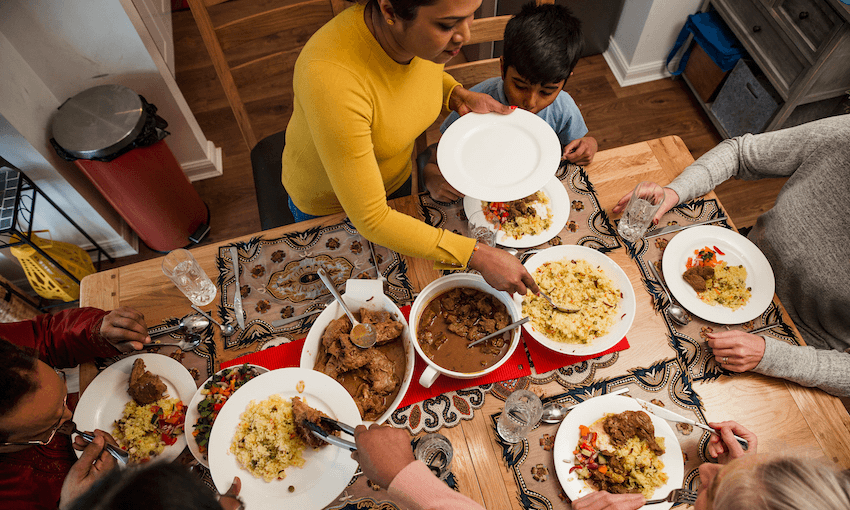Renu Sikka reminisces about discovering the delicious Ramadan foods of her Muslim friends while growing up in India, and shares a traditional recipe.
“The holy month of Ramadan is a time for generosity, prayer, fasting, self-restraint, and peace. It’s a time to reflect on our lives and to take a moment to think about other people who are less fortunate than us,” says my friend Anjum.
I distinctly remember growing up as a child in India, tiny lanes and gullies were always filled with vendors selling different types of special Ramzan food like kebabs, naans, biryanis, breads, fruits and of course sweets like sheer khurma and firni. (Ramzan is how Ramadan is said in India.)
After the long day’s fasting, it’s time for iftar, which brings amazingly delicious food. This time of the year is great if you’re the kind to drool over biryani, kebabs, haleem, succulent chicken, and crispy meat chased down with delectable desserts.
It’s also a time of great feasts – from each evening’s iftar, or fast-breaking meal, to the three days of celebration that conclude the month, a festival known as Eid al-Fitr, which is characterised by visits to friends and neighbours, and family meals in restaurants.
Whether from new Muslim friends at school and college or from old friends of the family, an invitation to a Ramadan meal promised a variety of traditional local recipes. Iftar at Anjum’s then dessert at Yasmin’s made my friends’ every hour of fasting feel worthwhile.
One such delightful and decadent dish I can’t get over is nihari. Nihari is a stew made by slow-cooking meat along with the bone marrow.
The origin of nihari dates back to the 17th and 18th centuries. Historians claim that nihari was developed in Old Delhi, while some say it was a product of the finest Awadhi khansamas and took its final shape in the kitchens of old Delhi.
Here’s my take on this royal cuisine.
NIHARI
- 4 tablespoons ghee (clarified butter)
- 2 medium onions, finely sliced
- 1kg lamb shanks or mutton pieces
- 1 teaspoon ginger paste
- 1 teaspoon garlic paste
- 2 teaspoons ground coriander
- ½ teaspoon ground turmeric
- salt
- 2 tablespoons wheat flour
- 3 tablespoons nihari masala (recipe below)
For the nihari masala:
- 1 tablespoon cumin seeds
- 2 teaspoons fennel seeds
- 1 teaspoon saunth (ground ginger)
- 5-6 green cardamom pods
- 2 black cardamom pods
- 4-5 cloves
- 1 bay leaf
- 1 inch cinnamon stick
- 8-10 black peppercorns
- ¼ teaspoon grated nutmeg
To garnish:
- 1 lime or lemon
- 1 inch piece of fresh ginger, peeled, cut into strips
- fresh coriander leaves
Dry roast all the whole spices and grind them to a fine powder.
Heat the ghee in a deep-bottomed stock pot. Once the ghee is hot, add the sliced onions and fry until they begin to turn brown.
Add the lamb shanks or mutton pieces, the ginger paste, garlic paste, coriander, turmeric and some salt, and mix well so the meat is coated in ghee and spices.
Sauté for five minutes and add the nihari masala as well as 2 litres (8 cups) of water. Mix well, cover and cook on very low heat for about 4 hours until the meat is tender.
Check regularly. You can tell if the meat is cooked when it falls off the bone easily with a wooden spoon.
Dissolve the wheat flour in ½ cup of water, making sure it doesn’t form lumps. Slowly add it to the pot, stir to mix it well and let it simmer for 10-15 minutes until the gravy thickens.
Sprinkle some lime juice over and garnish with ginger strips and fresh coriander leaves. Serve hot with basmati rice or naan bread.

